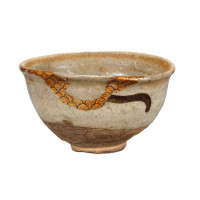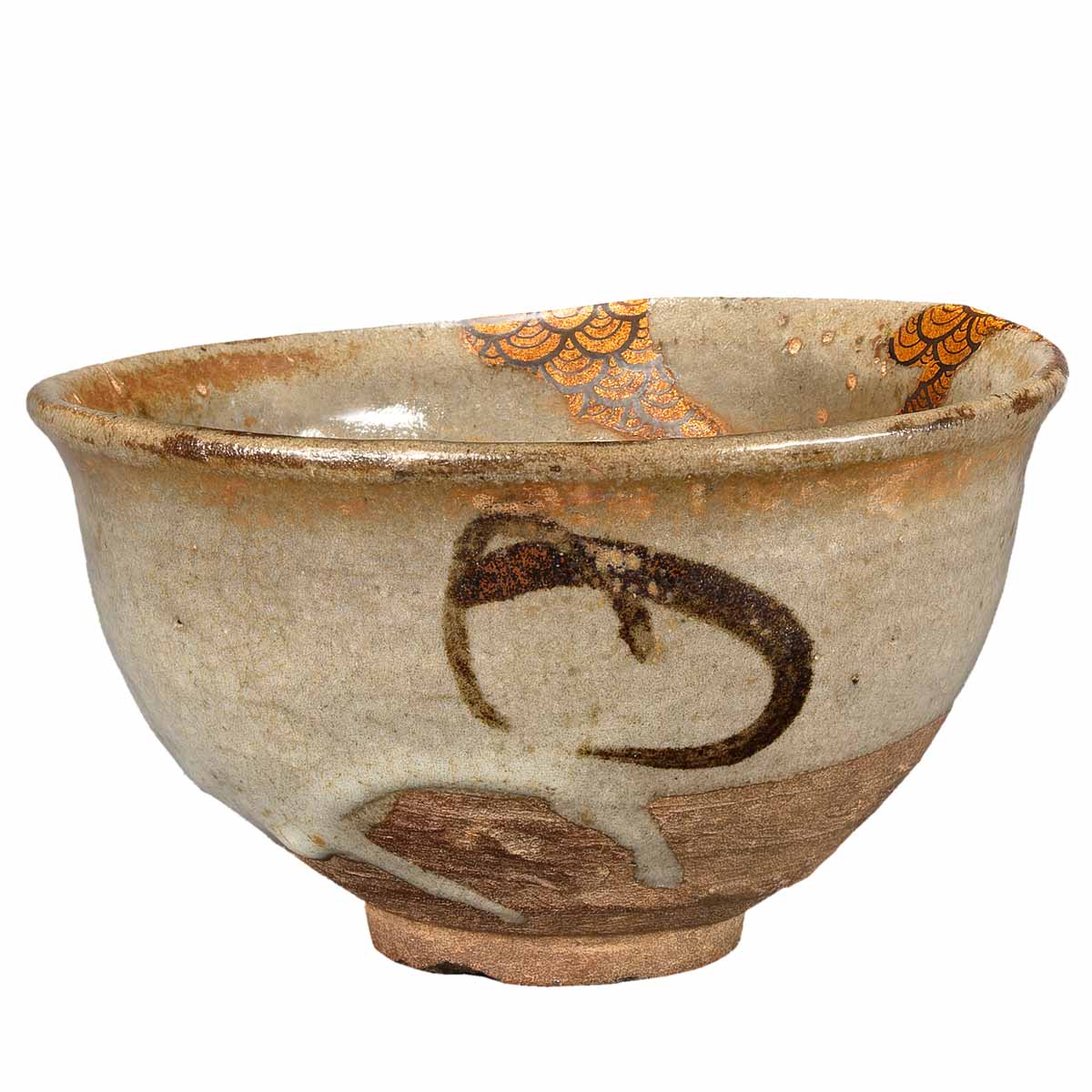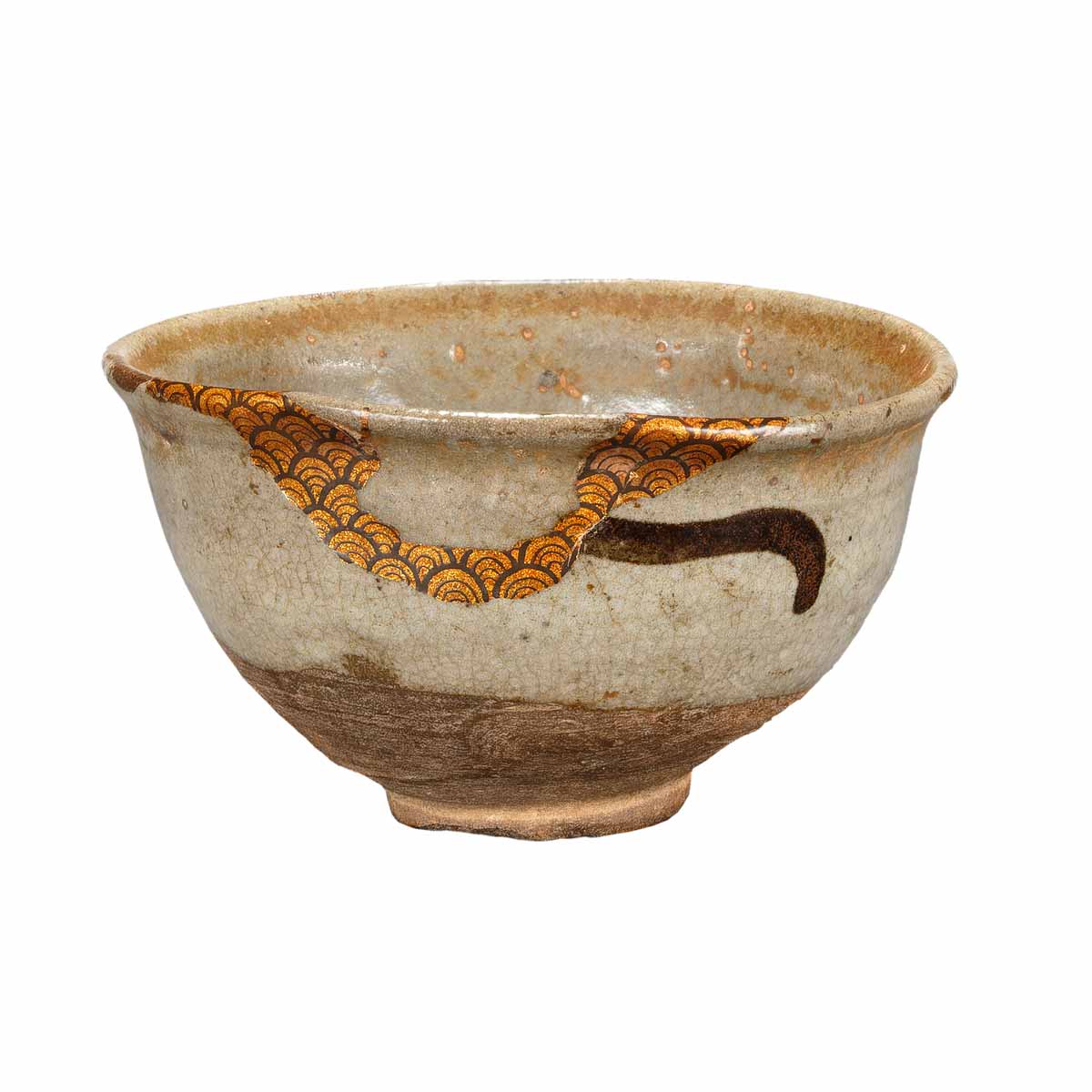Chawan
Ceramic

- Contact Us
-
Size
12.7 (h) x 7.2 x 7.2cm
-
Period
Edo period, 17th century
Description
e-Garatsu chawan
Karatsu stoneware tea bowl decorated with brush
Karatsu Kilns (Saga Prefecture, Kyushu Island)
Kintsugi gold lacquer repair with wave patterns
Karatsu ceramics (唐津焼, Karatsu-yaki) is a style of ceramics from around Karatsu in Saga prefecture in Japan. These sandstones, produced mainly between 1597 and 1630, contribute to the international reputation of the city and its potters. Karatsu ceramics, celebrated for their sturdiness and simple style, are fired in high kilns from iron-rich clay. It can be the support of a decoration, then called e-Garatsu, and has a transparent glaze (glaze), generally giving an earthy, simple and natural appearance.
An old saying ranks the ceramic styles used during chanoyu: “Ichi Raku, ni Hagi, san Karatsu”, that is to say: first Raku, then Hagi and finally Karatsu. During the codification of the way of tea, the master Sen no Rikyū (1521-1591) wished to replace Chinese porcelain bowls with local productions. Breaking with a long tradition, he was not attracted by smooth porcelain but rather by the imperfection and sobriety of stoneware, more sincere and in keeping with the spirit of the tea ceremony.

